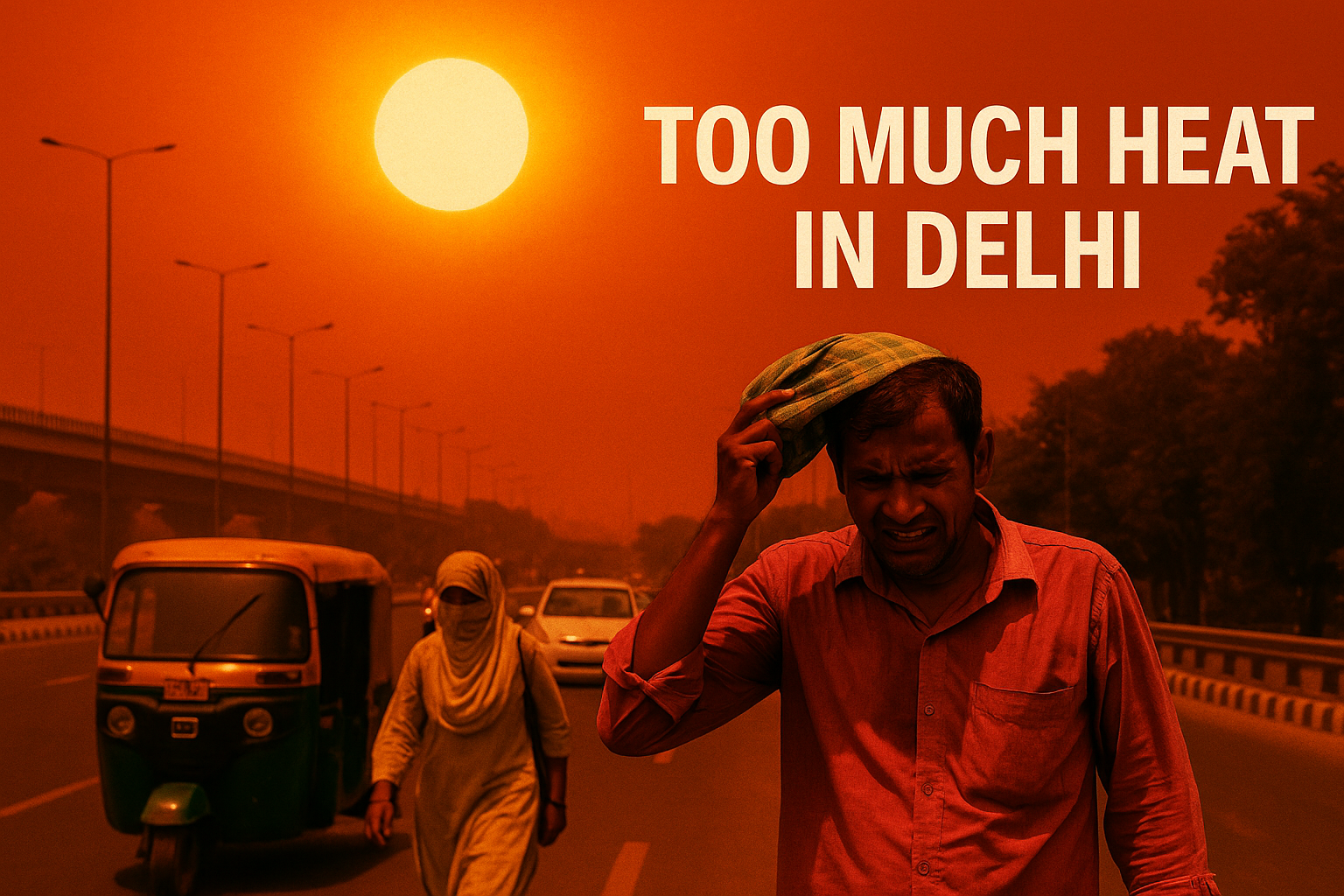
Delhi, the heart of India, is no stranger to hot summers. But in recent years, the capital has been battling record-breaking temperatures that are pushing the limits of human endurance, urban infrastructure, and environmental stability.
🌡️ The Heat Is On: Temperatures Soaring Beyond 47°C
This summer, Delhi has witnessed a relentless heatwave, with mercury levels frequently crossing 47°C in several areas. Localities like Najafgarh, Mungeshpur, and Pitampura have recorded some of the highest temperatures in India, prompting the India Meteorological Department (IMD) to issue repeated “red alerts.”
What was once considered an extreme temperature has become increasingly common, leaving citizens sweltering, especially those without access to air conditioning or reliable power.
🏙️ Life in a Furnace: How the City Is Coping
From schoolchildren to street vendors, everyone is feeling the heat. Daily life is being reshaped:
-
Water shortages in multiple colonies.
-
Overburdened power grids, leading to long outages.
-
Heat strokes and dehydration cases rising, especially among laborers and the elderly.
-
Public transport delays, as buses and metro stations struggle to handle the temperature load.
Hospitals are reporting a rise in heat-related illnesses, while outdoor workers have little choice but to brave the blazing sun. Even at night, temperatures often remain above 33–35°C, providing no real relief.
🌆 Urban Heat Island Effect Worsening
Delhi’s rapid urbanization has led to fewer trees and more concrete, making the urban heat island effect more intense. Areas with little greenery or open water retain heat throughout the night, making them significantly hotter than surrounding rural areas.
The lack of shade, poor urban planning, and overpopulation are amplifying the effects of climate change in one of the world’s most densely populated cities.
🌱 What’s the Way Forward?
Dealing with extreme heat requires urgent, long-term solutions, not just short-term coping mechanisms.
-
Urban greening: More trees, rooftop gardens, and shaded areas.
-
Water conservation and management: Ensuring better supply during summer.
-
Heat-resilient infrastructure: Especially in low-income areas.
-
Public awareness: About hydration, rest, and heat stroke symptoms.
-
Climate-conscious policies: Cutting emissions and planning climate-adaptive cities.




